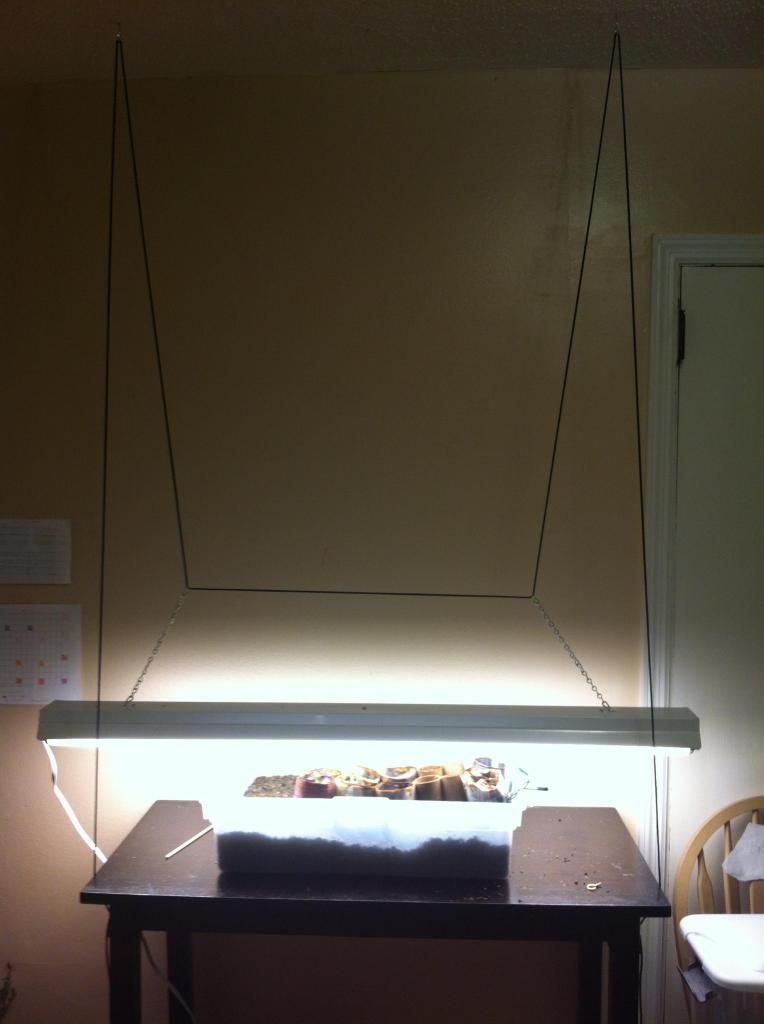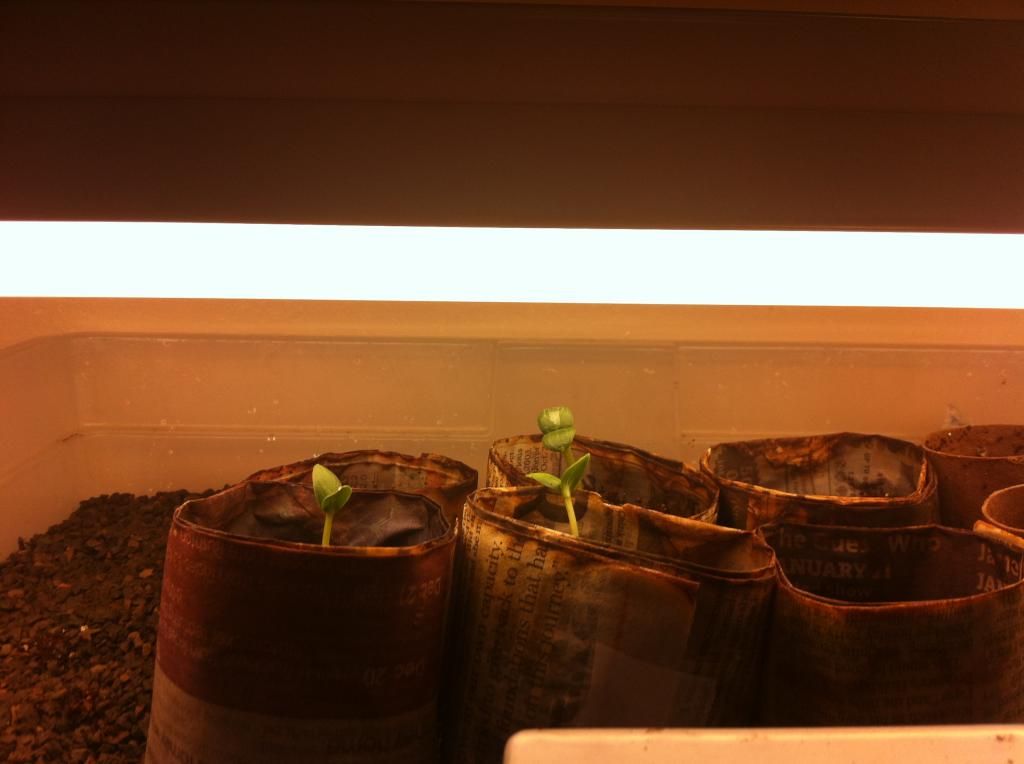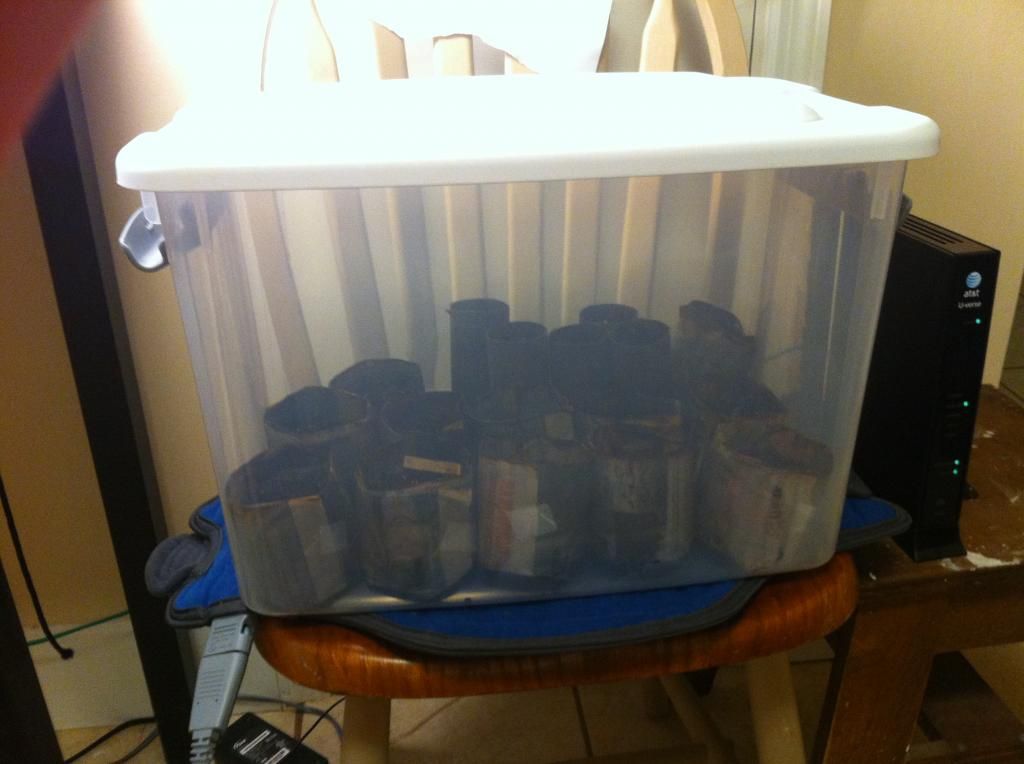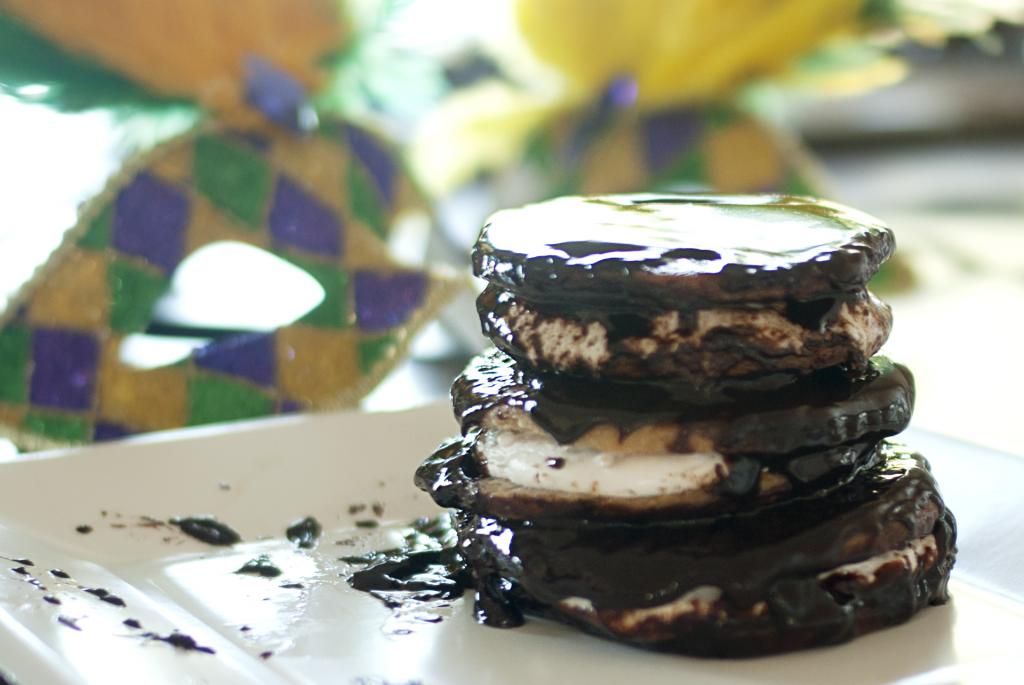If you've been keeping up with my progress, you know I kicked off this venture with a plastic bin full of kitty litter and Christmas lights, with my seeds in seed starting mix in homemade newspaper/toilet paper roll pots on top, and a round grow light hanging above it all. It seemed like a darn fine system at first, for one who doesn't know what she's doing. And in fairness, the kitty litter/lights combo is probably ok, and the biodegradable pots work well. But that little light just isn't cutting the mustard when it comes to my newly sprouted seedlings. Remember those lettuce seedlings I was so excited about? Desperate to get to the out-of-reach grow bulb, they became leggy and weak, and I sealed their fate with my overzealous "everybody outdoors!" jaunt. Fjord. They are no mas.
Fortunately, the name of this game from the start has been "trial-and-error" (emphasis on the error), so onward we forge. Last night, with what meager monies remained in my bank account, I bought a cheap shop light and some fluorescent bulbs (like all of the reputable tutorials told me to do from the beginning. I know, I know). Once home, Adam helped me rig the light so it dangles 2-4 inches from the tops of my plants. They're happy now. Needy little things.
Before:
After:
Much better. And adjustable, so as the plants grow I can raise the light. (Yes, that's how close the lights have to be to the tops of the plants).
Also, for the guys that haven't quite sprouted (bell peppers, one tomato, a few lettuces, and a cucumber):
Plastic bin on top of a heating pad set to a low temperature, with sowed seeds inside. Warm and humid. Cozy, even.
What I learned: seedlings need coddling. Soooooo much emphasis on that. I didn't appreciate just how much. I thought they'd be tougher if I raised them with a bit of a laissez-faire attitude. NOPE. Don't do that, people. Seedlings are like kidnappers or terrorists. GIVE THEM WHAT THEY WANT. Your life will be easier.
Check the Gardening 101 section of my blog for some new links to websites that set me straight on seed starting.
Fortunately, the name of this game from the start has been "trial-and-error" (emphasis on the error), so onward we forge. Last night, with what meager monies remained in my bank account, I bought a cheap shop light and some fluorescent bulbs (like all of the reputable tutorials told me to do from the beginning. I know, I know). Once home, Adam helped me rig the light so it dangles 2-4 inches from the tops of my plants. They're happy now. Needy little things.
Before:
After:
Much better. And adjustable, so as the plants grow I can raise the light. (Yes, that's how close the lights have to be to the tops of the plants).
Also, for the guys that haven't quite sprouted (bell peppers, one tomato, a few lettuces, and a cucumber):
Plastic bin on top of a heating pad set to a low temperature, with sowed seeds inside. Warm and humid. Cozy, even.
What I learned: seedlings need coddling. Soooooo much emphasis on that. I didn't appreciate just how much. I thought they'd be tougher if I raised them with a bit of a laissez-faire attitude. NOPE. Don't do that, people. Seedlings are like kidnappers or terrorists. GIVE THEM WHAT THEY WANT. Your life will be easier.
Check the Gardening 101 section of my blog for some new links to websites that set me straight on seed starting.









